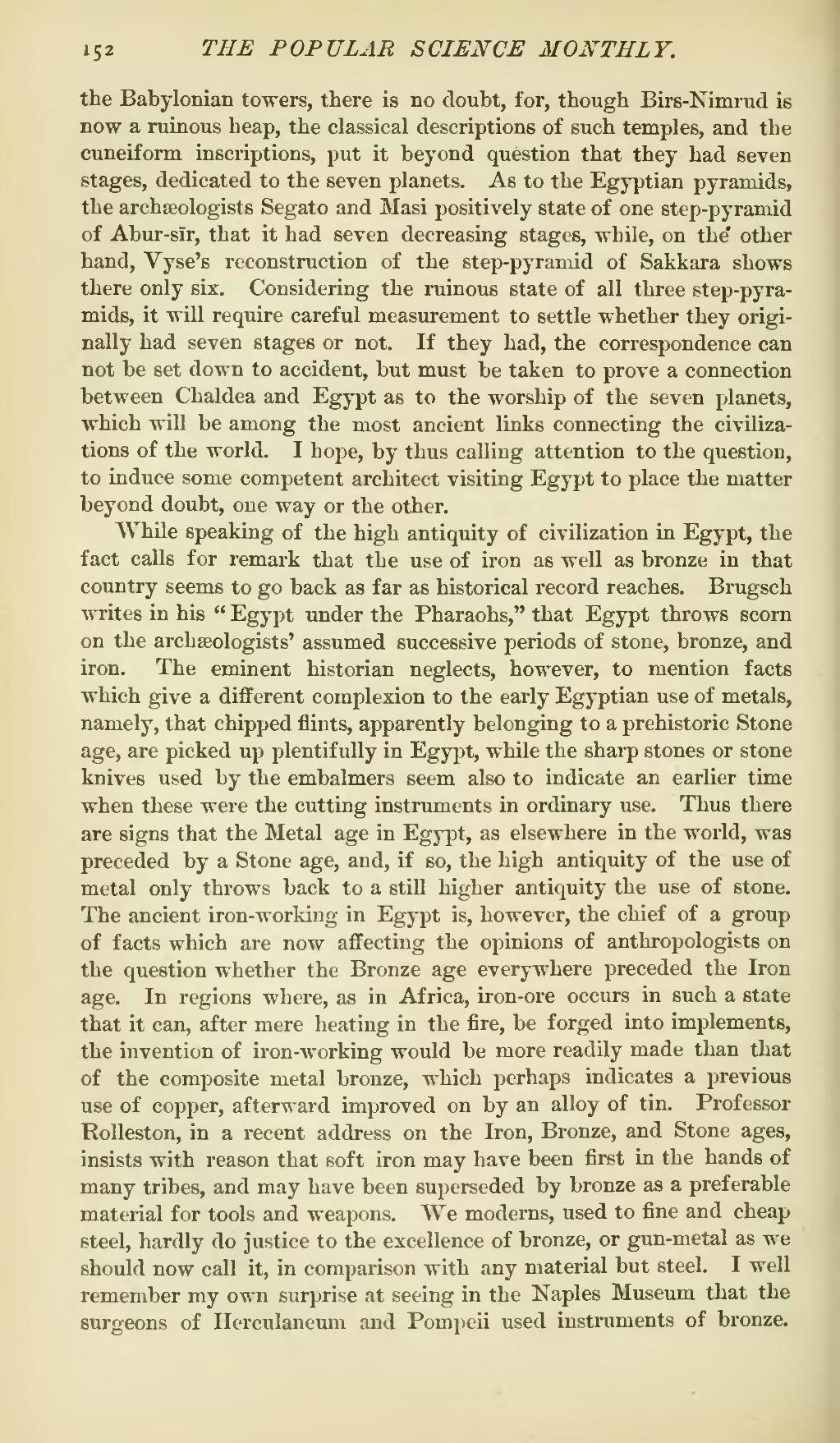the Babylonian towers, there is no doubt, for, though Birs-Nimrud is now a ruinous heap, the classical descriptions of such temples, and the cuneiform inscriptions, put it beyond question that they had seven stages, dedicated to the seven planets. As to the Egyptian pyramids, the archæologists Segato and Masi positively state of one step-pyramid of Abur-sīr, that it had seven decreasing stages, while, on the' other hand, Vyse's reconstruction of the step-pyramid of Sakkara shows there only six. Considering the ruinous state of all three step-pyramids, it will require careful measurement to settle whether they originally had seven stages or not. If they had, the correspondence can not be set down to accident, but must be taken to prove a connection between Chaldea and Egypt as to the worship of the seven planets, which will be among the most ancient links connecting the civilizations of the world. I hope, by thus calling attention to the question, to induce some competent architect visiting Egypt to place the matter beyond doubt, one way or the other.
While speaking of the high antiquity of civilization in Egypt, the fact calls for remark that the use of iron as well as bronze in that country seems to go back as far as historical record reaches. Brugsch writes in his "Egypt under the Pharaohs," that Egypt throws scorn on the archæologists' assumed successive periods of stone, bronze, and iron. The eminent historian neglects, however, to mention facts which give a different complexion to the early Egyptian use of metals, namely, that chipped flints, apparently belonging to a prehistoric Stone age, are picked up plentifully in Egypt, while the sharp stones or stone knives used by the embalmers seem also to indicate an earlier time when these were the cutting instruments in ordinary use. Thus there are signs that the Metal age in Egypt, as elsewhere in the world, was preceded by a Stone age, and, if so, the high antiquity of the use of metal only throws back to a still higher antiquity the use of stone. The ancient iron-working in Egypt is, however, the chief of a group of facts which are now affecting the opinions of anthropologists on the question whether the Bronze age everywhere preceded the Iron age. In regions where, as in Africa, iron-ore occurs in such a state that it can, after mere heating in the fire, be forged into implements, the invention of iron-working would be more readily made than that of the composite metal bronze, which perhaps indicates a previous use of copper, afterward improved on by an alloy of tin. Professor Rolleston, in a recent address on the Iron, Bronze, and Stone ages, insists with reason that soft iron may have been first in the hands of many tribes, and may have been superseded by bronze as a preferable material for tools and weapons. We moderns, used to fine and cheap steel, hardly do justice to the excellence of bronze, or gun-metal as we should now call it, in comparison with any material but steel. I well remember my own surprise at seeing in the Naples Museum that the surgeons of Herculaneum and Pompeii used instruments of bronze.
